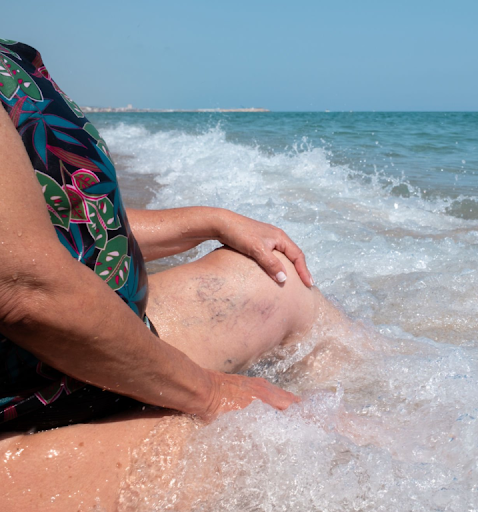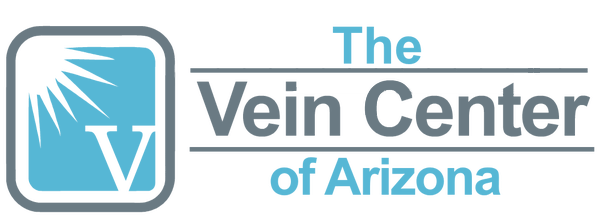Are Spider Veins Dangerous? Understanding the Health Risks


Spider Veins
Tiny vessels known as capillaries that lie closely under the skin surface develop into spider veins. One-way valves operate inside each of these small blood vessels, just like they do in veins throughout the body. The valve opens during blood flow toward the heart to enable blood passage, and it then stops backward blood movement to permit blood flow.
Broken or weak valves within the veins cause blood to accumulate from the unnatural leakage. The veins expand because of this process and become visible which leads to the formation of spider veins.
The majority of spider veins develop on your legs and face surface. Multiple factors increase the risk of developing spider veins among patients.
- Family history of spider veins
- Hormonal changes during pregnancy and menopause
- Prolonged time sitting or standing
- Being overweight
As a natural result of aging you face increased chances of spider vein development.
Health Concerns About Spider Veins:
The presence of spider veins by itself does not create any health-related trouble. Spider veins rarely create discomfort but a few patients with leg spider veins sometimes feel itchiness or pain.
Online searches about spider veins usually first describe spider veins, followed by serious symptoms that only appear with varicose veins. If you have any questions about vein health, please contact our office. We will be happy to address all your concerns about complications arising from varicose veins or any other vein symptoms.
Spider veins appear as an early sign that venous disease is present in your body.
The presence of spider veins indicates possible more significant vein problems even when they generate no individual symptoms. An extensive vein network connects all blood vessels throughout your body and hence spider veins might indicate irregularities with bigger veins. Spider veins function as a warning signal indicating other problems with vein circulation.
Deep vein thrombosis along with chronic venous insufficiency leads to elevated pressure in afflicted veins. A high venous pressure brings about various additional complications.
- Fluid pressure in the blood vessels may push liquids into neighboring tissues which eventually results in venous stasis ulcer formation.
- Pressure alteration leads to both stretching and weakening of the one-way valves. Your legs display spider veins because abnormalities exist with high pressure within major veins preceding the onset of symptoms from this underlying issue.
- A medical examination is needed when spider veins cluster at your ankle since this condition is known as corona phlebectatica. Ankle spider veins indicate the presence of serious chronic venous insufficiency.
Spider Angioma Masquerades as Spider Veins but Signals Systemic Disease:
The presence of spider angioma in your body indicates systemic diseases because it looks similar to spider veins
Spider angiomas share the same harmless categorization as spider veins do. Spider vein development signifies either cirrhosis rheumatoid arthritis or thyroid hormone imbalance in addition to being a common benign skin condition. When multiple spider angiomas emerge they indicate liver disease which becomes present in 95 percent of all patients.
Spider angiomas present like spider veins do but their distinctive feature is an initial red spot with branching reddish patterns extending from this base. You will find red skin extending beyond the vein while the difference remains visible from other spider veins.
Frequently Asked Questions(FAQs):
What Are Spider Veins?
The visible vascular features known as telangiectasias present as spider veins when small red blood vessels create clusters on the skin’s surface. The skin surfaces of the legs face and chest areas frequently show the presence of these colored venous marks. The presence of spider veins does not create pain or discomfort yet they may cause distress because of how they appear.
What Causes Spider Veins?
Spider veins appear when someone inherits these veins through genetics but pregnancy along with hormonal changes obesity and excessive standing or sitting positions become additional causes. Liver disease together with blood clots both cause the onset of spider veins. Spider veins appear as a result of illnesses that affect vein walls either directly or cause them to weaken.
What Causes Spider Veins on Ankles?
Rounding up spider veins on the ankles tends to stem from both continuous standing or sitting and from wearing tall shoes or constricting footwear. The veins in ankles expand when these activities generate excessive pressure on their walls thus making the veins more noticeable to the human eye.
What Causes Spider Veins on Legs?
Many factors such as genetic predisposition together with pregnancy hormonal changes and obesity with prolonged standing or sitting positions lead to spider veins developing on the legs. Spider veins develop from both leg traumas or injuries together with direct sun exposure.
Is Spider Angioma Dangerous?
The presence of Spider Angiomas normally counts as harmless since they do not require medical intervention. A doctor needs to check any observed spider veins because the condition might point to liver disease or hormonal problems. A doctor must be consulted when an angioma exhibits changes to its dimensions, form, color, or discomfort or bleeding occurs.
Why Do Spider Veins Happen?
A failure of vein valves ends in the formation of spider veins. The functioning valves operate to block backward blood flow during health but once damaged blood accumulates within the veins to create increased size along with enlargement of the veins. The mentioned explanations describe several potential reasons but these represent only a few.
When should you be concerned about the development of varicose veins?
Your symptoms include discomfort along with swelling of your legs combined with skin alterations or soreness around your legs and ankle ulcers that could indicate the presence of varicose veins. Seek medical attention for visible veins over 1/4 inches in size or conditions of heated or sensitive legs. The prevalence of the condition is higher among people who sit for extended periods or have relatives affected by varicose veins. Getting medical checkup should be your first step if you feel concerned.
Book Your Visit Now!
People who need spider vein treatment or are concerned about their visible veins should connect with our Vein Centre in Arizona. Users can easily schedule their appointments through the website even while currently visiting the platform.
Resources:
American College of Phlebology – “Chronic Venous Disorders: Spider Veins & Varicose Veins”
- https://www.phlebology.org
- Discusses the venous system, how spider veins form, and when they indicate underlying vein disease.
National Institutes of Health (NIH) – “Venous Insufficiency and the Development of Spider Veins”
- https://www.ncbi.nlm.nih.gov
- Scientific research on venous insufficiency, its impact on circulation, and related skin conditions.
Cleveland Clinic – “Varicose Veins and Spider Veins: Causes, Symptoms, and Treatments”
- https://my.clevelandclinic.org
- Explains the difference between spider veins and varicose veins, their potential health risks, and treatment options.
American Vein & Lymphatic Society – “The Relationship Between Spider Veins and Venous Health”
- https://www.veinandlymph.org
- Details of how spider veins may indicate deeper venous health concerns and the importance of early detection.
Journal of Vascular Surgery: Venous and Lymphatic Disorders – “The Clinical Implications of Spider Veins and Their Role in Chronic Venous Disease”
- https://www.jvsvenous.org
- A peer-reviewed journal article discussing how spider veins can sometimes be an early sign of chronic venous disease.
